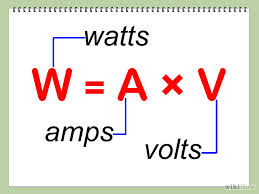The first thing I realized after comparing all these vibration machines is that the horsepower rating doesn’t matter. Many of these manufacturer's are just rating the input power, not output or actual power. And even if they do, they usually try to boost up their rating by giving you the peak power which is not a realistic power.
A Zaaz 20k which has only 400 watts is the most powerful vibration machine when you compare its same speed setting to any other machine at that same frequency. It is even more powerful than the Nitrofit or Hypervibe but after the 15.2 hertz, then of course the others have more power. Many people want more power on the low settings for doing lymphatic exercises.
I personally use the Zaaz 20k when I do my lymphatic where I have nearly all my weight on my heels. It is hard for some people to lean 100% on their heels with amplitudes over 10mm for an entire 10 minutes. If you ever watch people on a machine, you will notice most people don't stand all the way with their feet spread out to the edge.
Note: I only promote DC motors which have a low EMF. There are only a few AC motor powered machine that are shielded and have a low EMF. The Zaaz 20k has a 400 watt motor and has very low EMF and is one of the very few AC motors that have low EMF. Also, the Zaaz has a 4 amp motor. The Hypervibe has 900 watts and a 1.5 amp motor but very expensive bearings in their tilt table mechanism. It is the only machine that can hit 35 hertz besides the Galileo that goes to 40 hertz. Google the 40 hertz Galileo. Technically that is the most powerful machine but is probably out of most people's price price range. I am not going to even tell you what my body felt like after 10 minutes standing on that Galileo at 40 hertz!
Note: make sure you watch out for machine with really high wattage, like a 1500 watt machine that has amperage under 3/4 an amp. What happens is these machines are pulling more amperage than the motor can handle and if the person is too heavy for the machine at a certain length of time, the machine gets hot and oxidizes the "aluminum" windings. You will never see copper windings in these cheap machines that burn out constantly. This is why I always ask people what their weight is and if they are going to lean back on their heels. If a really heavy person (over 200 pounds) is just going to stand on the machine not on their heels, then the machines 99% of the time have no problem but when people try to do what the machines are meant for, which is usually for lymphatic drainage, then leaning on the heels is what kills the motor in most of these high wattage/low amperage machines.
What some of these companies don’t tell you is that even if you are close to their max weight limit even by 50 pounds you can still be wearing out the bearings and motor quicker. This is why I always get a machine that is rated at my current weight plus 100 pounds higher if multiple people are going to use it, or 50 pounds if just myself.
If a machine has a really high wattage and high amperage make sure its not the vibration machines with the aluminum windings. Copper windings are in the better quality ore expensive motors. They have less friction and don't make the noise that the aluminum ones make. The copper windings are heavier also. So if you see a 1500 watt motor somewhere and its one of those 300 dollar machine, it's probably an aluminum motor. The aluminum ones can get hotter with heavier people and the motors burn out faster.
The more wattage a machine has the more it can deliver torque to the tilt table mechanism under the plate. With higher wattage it initiates a "pop" of G force rather than a push. If it has too much pop it can be very jarring and if not enough then the plate feels like a push force. My best example is the difference between a baseball being hit 50 miles per hour with the crack of a bat versus being thrown 50 miles per hour from the pitcher. Both go the same speed but with a different force.
Whenever I see a high wattage machine and its really cheap, I know they are just telling me the input wattage. Some of these motors are so inefficient that a 1000 watt motor might only be producing 200 watts (20% of its motive force). This is the constant and actual energy that is going to the plate.
I really wish these vibration machine companies would state their output power instead of input or peak power so buyers won't be confused.
KEEP THIS FORMULA HANDY AS YOU CAN BUST COMPANIES IN LIES WHEN THEY LIKE ABOUT THEIR WATTAGE. ALSO 1 HP = 746 WATTS.
NOTE: SOME MACHINES RATE THEIR POWER IN NEWTONS, G FORCES, HORSEPOWER, OR WATTAGE.
Bone Density Review
Take My Vibration Quiz
It helps!
Ask for Jayden
1-888-589-6748
8am to 10pm
JaydenVibration.com
PowerVibe - VMaxFitness - DKN - Turbo Sonic - VIBEPLATE - TheraVibe - HyperGravity - VibraTrim - WAVE - HYPERVIBE - ZAAZ 20K - VIVOVIBE - VIBRATHERAPY
...because every manufacture told me their machine was the best
Ask for Jayden
1-888-589-6748
8am to 10pm
Ask for Jayden
1-888-589-6748
8am to 10pm
JaydenVibration.com
PowerVibe - VMaxFitness - DKN - Turbo Sonic - VIBEPLATE - TheraVibe - HyperGravity - VibraTrim - WAVE - HYPERVIBE - ZAAZ 20K - VIVOVIBE - VIBRATHERAPY
...because every manufacture told me their machine was the best
Ask for Jayden
1-888-589-6748
8am to 10pm



